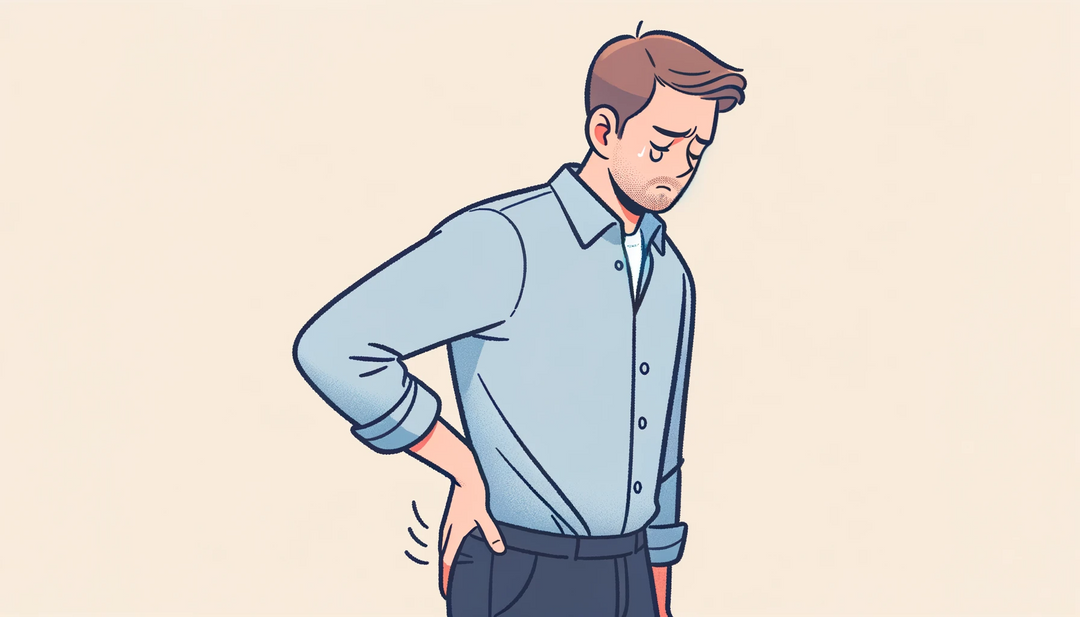7 Science-Backed Ergonomic Exercises & Stretches

We all know that sitting in the same position for long periods of time on a daily basis can have detrimental effects on our health, especially as we get older. It may not feel like it, but all those hours spent crunched over your computer are slowly atrophying key muscles in your body and accelerating the aging process.
As a wise man once said, "what good is all the money in the world if you won’t be around to enjoy it?" In this article, you’ll find quick, science-backed exercises and stretches that you can perform at work to keep neck and back pain at bay while promoting health and mobility, so you can enjoy life to the fullest.

Science-backed Benefits of Stretching
A 2011 study published in the Archives of Internal Medicine showed that doing regular stretches can significantly reduce the incidence of low back pain which is typically associated with prolonged sedentary living.
Note that the 2011 study referenced above was a randomized trial comparison, featuring 220 adult participants, 92 of which did yoga once a week, another 91 went through a stretching and strengthening program while another 45 participants were given a self-care book with educational information without any specific exercises.
The group that practiced yoga experienced considerable relief from back pain at the end of the 12-week research period, although not as significant as the group that did conventional stretching exercises. Needless to say, the group who were given the self-care book experienced no improvement in their physical condition whatsoever, with the conclusion being that the key to overcoming lower back pain is to get up and move.
Some of the stretches performed by the most successful group include lying on your back and doing trunk rotations which most people can do. Bridging is another exercise that helps to strengthen the core while gently moving your back. Pelvic tilts provide a large range of motion in the lower back. Single knee-chest presses allow you to squeeze and strengthen each knee, while both hamstring and heel core stretches are easy to do lying down on the floor. Keep reading for other ergonomic stretches and exercises that were shown to promote mobility and alleviate low back pain.

Photo by Benn McGuinness on Unsplash
7 Science-Backed Stretches and Ergonomic Exercises to Do
In addition to investing in a physician-approved ergonomically-designed standing chair ( like our 5-star rated Ergo Impact Standing Chair), be sure to get up and move around every 30 minutes when you’re at the office. And if you’re not sure what to do, here are some proven quick and easy stretches and exercises to get you started.
1. Wrist Stretch
When sitting and typing, we’re usually rounded forwards at the spine. To reverse this, it’s helpful to do an extended wrist stretch. Move your chair back and sit at the edge of your chair before taking your hands down by your side. Then, twist and extend your wrists down and open them. You’ll feel this stretch through the hands, the forearm, and chest. Avoid bringing your head forwards as you perform this stretch and keep it straight throughout. Repeat five times.
2. Neck Stretches
To stretch your neck, stand up and start by doing basic chin tucks. Peck the neck five times to stretch your neck and turn on the muscles on the front of the neck. Now, do side bends to get to the lateral side and work your hand towards your knee on each side. Repeat on each side five times and go as far down as you feel comfortable.
3. Seated Side Stretch
This is a great seated stretch that you can do at the office. Bring your hands up from the sides and then slowly lower them back while bending your neck back. Stretch from side to side and make sure you’re breathing as you’re stretching, as relaxed breathing yields better stretch quality.
4. Full Torso Stretch
In a standing position, fist your hands along the beltline and extend your back straight. Extend off that low back to get some movement out of it and then follow up with chin tucks while standing, before doing a side bend tracing down your leg as you reach for your knees. You should feel the stretch going on the opposite side of your torso. Repeat on both sides to feel the relief.
5. Knee Squeeze
Stand upright and lift one leg to your chest. Start by squeezing one knee and then move onto the next. If you’re not very flexible, place your hand underneath the leg instead of over the knee.
6. Hamstring Stretch
A hamstring stretch is the fastest way to get the blood flowing through your legs while improving mobility.
7. The Cat-cow
The cat-cow is a well-known yoga pose and stretch exercise that works on the neck and the back. To perform this stretch, get down on your hands and knees. Keep your hands pointed and underneath your shoulders.
Inhale and slowly arch your back as you count to five. Drop your belly towards the floor while raising your head, chest, and tailbone up. Hold for three seconds before exhaling and round your back. Drop your head and tailbone down and round your back while pulling your belly inwards. Hold the stretch for three seconds. Arch up and down, repeat 4 to 5 times.

Photo by Scott Broome on Unsplash
According to scientific research, these exercises can help to relieve chronic back pain and they all basically stretch and strengthen the muscles. None of these moves should hurt and it’s important to be gentle with yourself when starting out, especially if you have a disc problem.
There might be a little bit of stretch discomfort at first, but if there’s pain then you should stop. Also, doing these exercises for 30 seconds several times throughout the day is enough to feel the benefits.






Leave a comment